This article started life as a comparison of three EOS telephoto prime lenses as economical alternatives to the much vaunted Zuiko 300 mm f/4 IS PRO. I then realized that this could be a serendipitous opportunity to also reintroduce an even more esoteric telephoto prime that has been lost to history despite being a true blue Olympus product.
I’m referring to the much respected Olympus OM 500mm f/8 reflex lens introduced in 1982 for the OM 35mm film system. As an avid amateur astronomer and astrophotographer, I’m very familiar with the design of this lens as it is essentially a catadioptric telescope with a Cassegrain configuration. A catadioptric telescope is a reflector type telescope (with a number of weakly refractive lens elements) so it effectively has zero chromatic aberration without having to resort to using expensive extra low dispersion (ED) glass elements. Laurent Cassegrain was a 17th century French Catholic priest who also taught high school science and devised the twice folded light path that places the focal point behind the telescope, allowing for an elegantly compact package of high focal length. This is also most likely a Dimitri Maksutov Cassegrain where both the primary mirror (#2) and corrector lens (#3) are circular to simplify the fabrication process. Below is a comparison of a pair of OMD-EM1s mounting a Sigma 500mm f/4.5 EX DG APO HSM telephoto prime and the OM 500mm f/8 reflex prime (shown with Metabones Speed Booster T Ultra so effectively f/5.6).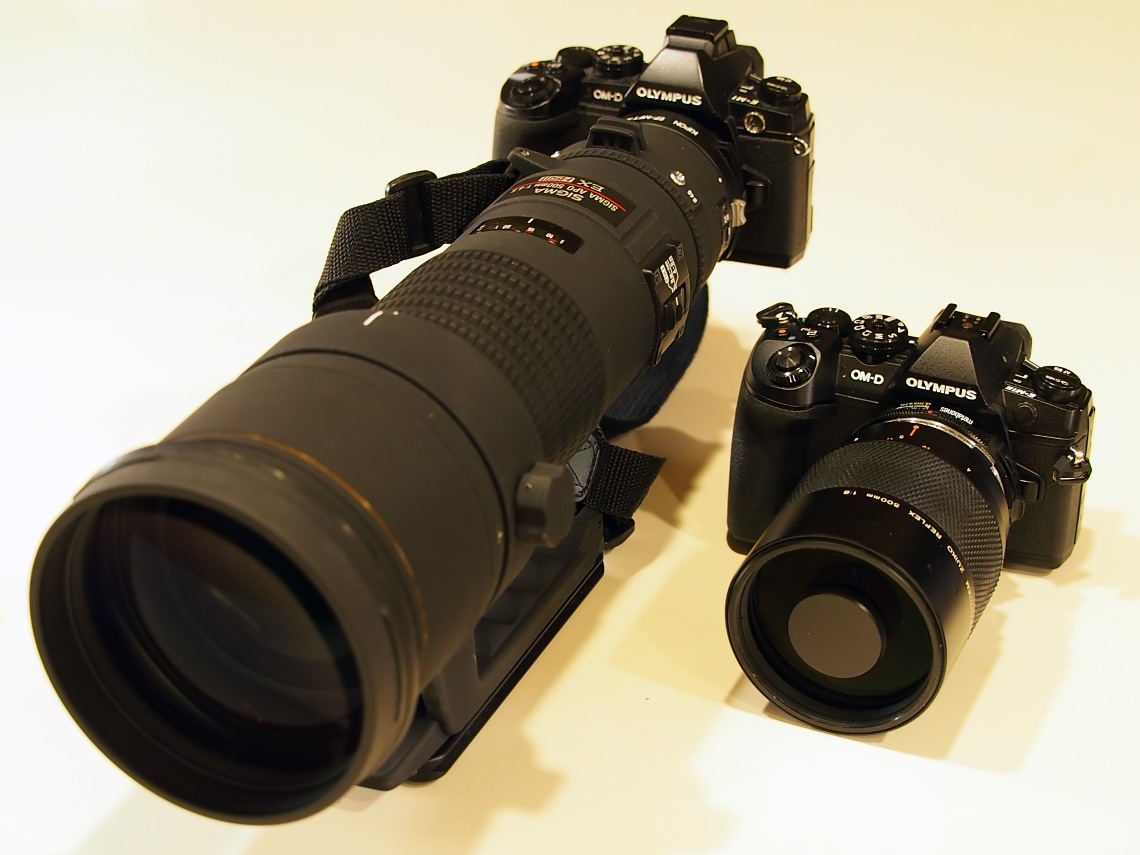
Which would you rather carry?
The light path schematic of the OM 500mm reflex lens is shown.
Again, as an astrophotographer I can attest that Olympus did a very special job designing this lens. The optical prescription is 5 elements in 2 groups, contrast that to the Sigma with 11 elements in 8 groups, or eleven opportunities to undergo decentering and decrease image quality. The main mirror (#2) and the secondary mirror (#1) are second surface mirrors meaning that instead of have an exposed top silvered surface, the reflective layer is protected by being under glass on the other bottom side of the mirror. There is the spherical front lens or mensicus (#3) and two lens elements in the central baffle tube (#4 & #5) designed to correct optical aberrations. Typically the light passes through a central opening bored into the primary mirror (#2) but Olympus cleverly kept the mirror intact but did not silver that central region and used the clear region of glass as the third corrective lens element. This enhanced structural integrity of the primary mirror means less tendency to warp and affect its critical curvature, the thickness of the optical elements in the diagram have been exaggerated for clarity. All surfaces are multicoated.
The reputation of mirror lenses is quite poor because the majority of the ones currently available are cheap, and cheaply made. Even vintage mirror lens from the same period but made to a budget minded price point also perform poorly. The Olympus lens retailed for about $400 which in today’s dollars is over $1000. But since they are relatively rare and not well known, eBay bargains can often be had. Contrast that to the very well known Zeiss Mirotar lens which consistently is listed above $1000 on eBay and is apparently no better optically. So along with a shoot out of conventional and familiar telephoto prime lenses, I wanted to see how well the Olympus reflex lens performed in comparison.
The test was conducted indoors with a well lit ISO 12233 resolution test chart, an EPL-5 camera body with stabilization turned off and mounted on a Manfrotto 410 geared head and carbon fiber tripod. The best of three raw images was selected for each lens combination and MTF analysis performed with QuickMTF. A Kipon adaptor was used for all lenses except the Olympus reflex lens, an OM-m43 adaptor and a Metabones Speed Booster T Ultra was used for testing at f/8 and f/5.6, respectively. For each different focal length, the camera was moved to frame the test chart so that the lateral test regions were just visible.
Below are the MTF10 and MTF30 curves for: EOS 300mm f/4 L, Sigma 400mm f/5.6 HSM APO Macro, and the Sigma 500mm f/4.5 EX DG APO HSM. All shot at f/5.6 and ISO 200.
 Below are the MTF curves for the Olympus 500mm reflex at f8 and f/5.6
Below are the MTF curves for the Olympus 500mm reflex at f8 and f/5.6
Only generalities can be concluded from these curves but the three conventional telephoto primes do display sharp centers as independent reviews have confirmed in the past. Despite the central obstruction of the secondary mirror, the Olympus reflex lens doesn’t show any appreciable decrease in contrast as would be predicted by its design. It seems to suggest a more even, flatter field of sharpness than the other primes but with perhaps slightly inferior sharpness overall. Again IQ improves with use of the Metabones Speed Booster and a more useful f/5.6 speed. I would conclude that this MF telephoto prime lens would not be my first choice for wildlife photography, but if I was traveling and space was at a premium and I needed the reach, the IQ of the 500mm reflex lens would not be a deterrent.
I don’t have an example of the new Zuiko 300mm f/4 IS PRO lens to test but other reviews have shown it to be nearly as sharp as the 40-150 f/2.8 PRO at 150mm, which I do have. This was tested at f/2.8 and f/5.6.
Nothing is better than a modern Zuiko lens. Focusing speed is also incredibly rapid and precise and better than any adapted lens. If I could easily afford it I would purchase the Zuiko 300mm f/4 IS PRO but I still feel a need for a longer reach instrument. The Sigma 500mm and the Olympus 500mm are still alternatives of worthy consideration.
Addendum
Some readers reacted that a shootout isn’t a shootout without images. So I had the day off but it was a very overcast winter’s day as I set off for my regular nature walk along some creeks. I wanted the most challenging test for a manual focus lens and that would be wildlife photography.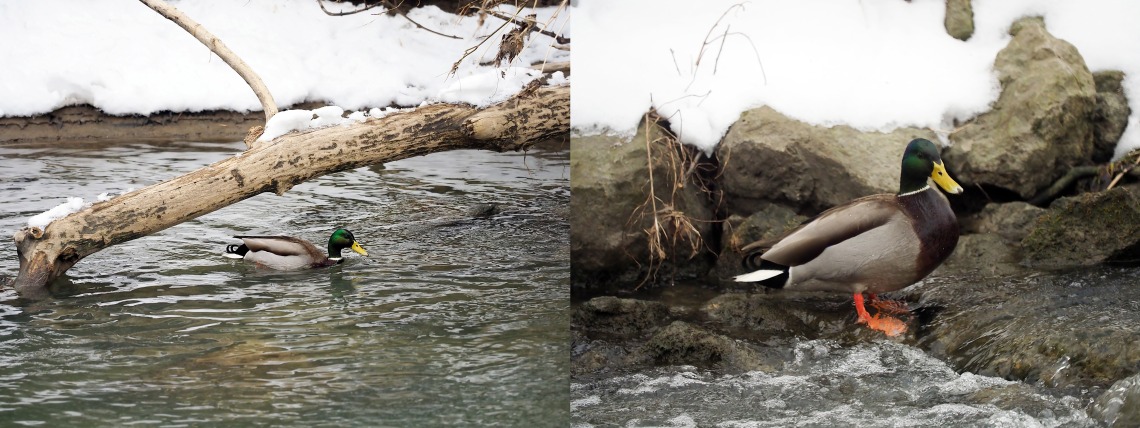
So some 100% center crops of the Zuiko 40-150 f/2.8 PRO at 150mm and the OM 500mm f/8 with Metabone Speed Booster T Ultra (effective 355mm focal length f/5.6) at ISO 800.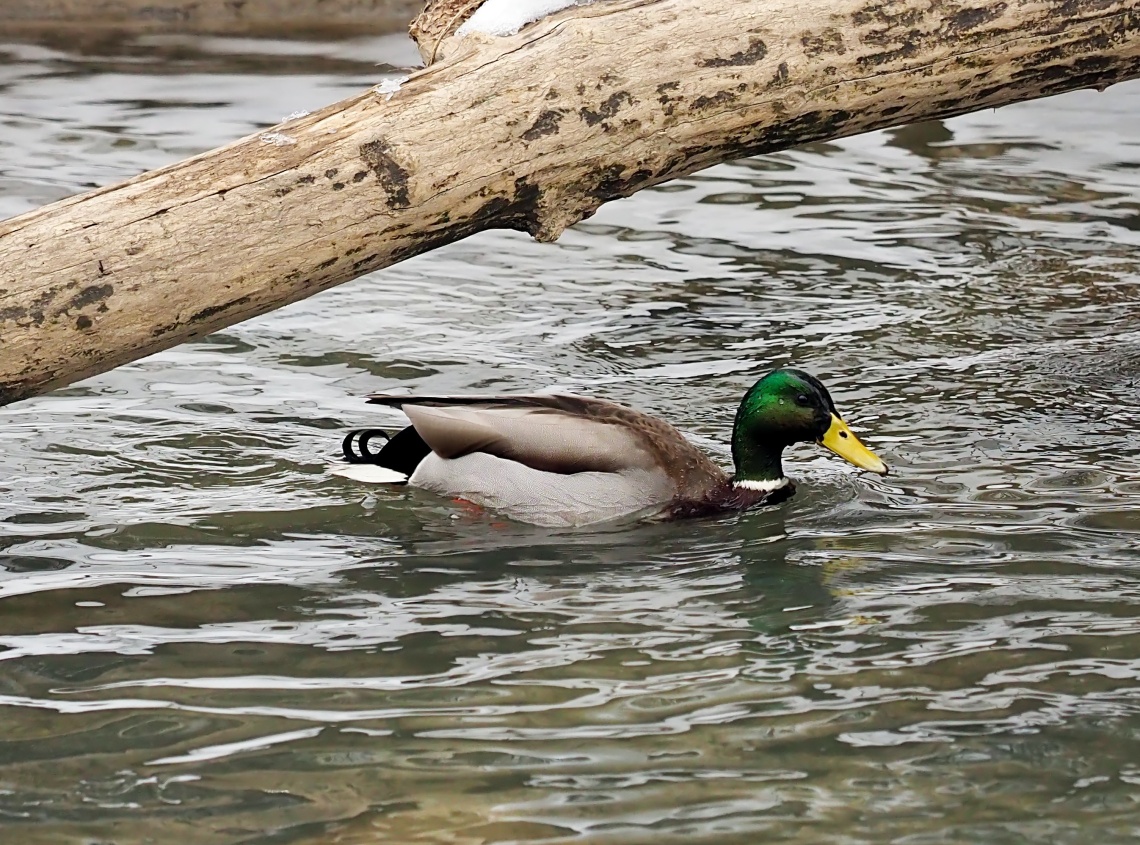
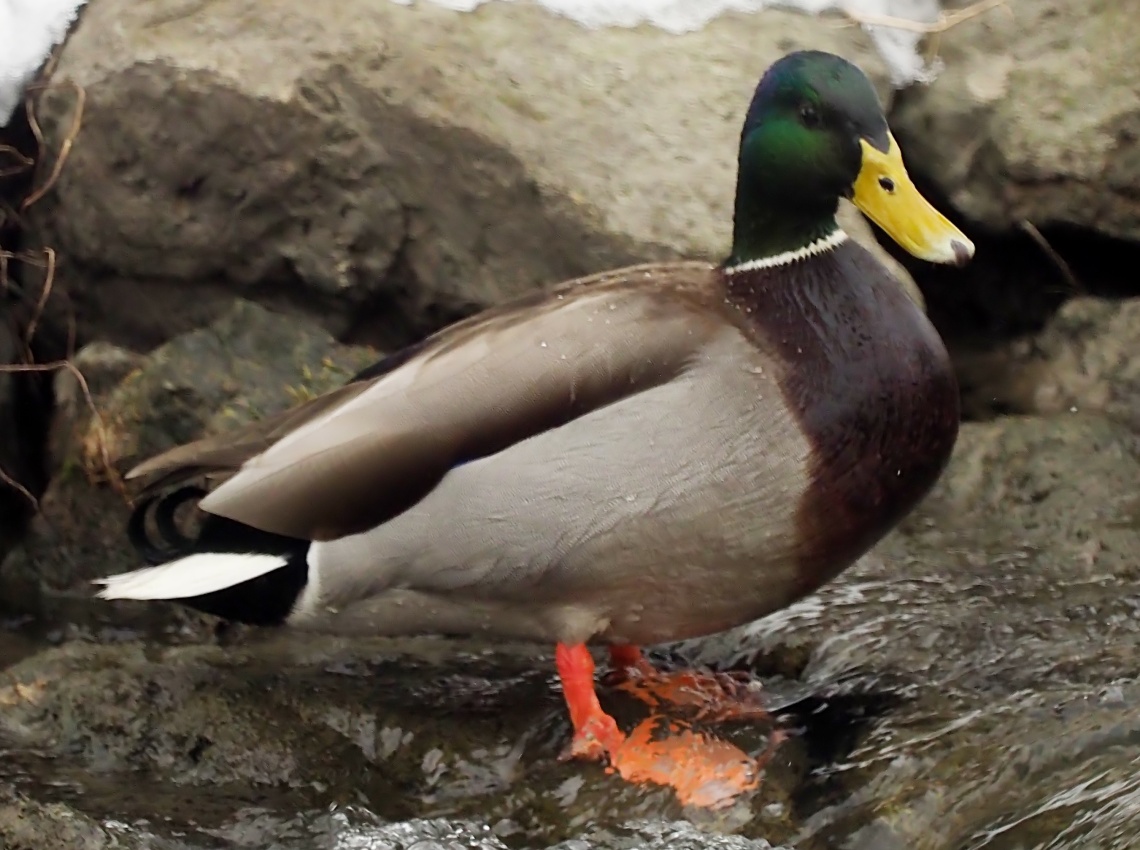
This male Mallard duck was shot at about 30 feet away and for the manual focus OM 500mm reflex lens, the subject did cooperate by standing on the opposite bank while I took about 10 seconds to magnify the image in the EVF to 14x to ensure the focus was optimal before tripping the shutter. The lens is well designed to accept very fine tuning movements. At this scale the image quality appears very acceptable but in truth the modern Zuiko 40-150mm delivers such overwhelming sharpness and resolution that the image can be enlarged to 200% without any breakdown.
Finally, a true Canadian winter would not be complete without an image of a beaver, caught on the same outing this afternoon having a refreshing swim, deep within the city limits of the 4th largest city in North America. 
Addendum #2
The next day it was intensely sunny and warm, 14 °C!! My wife and I went for another nature walk and at the very end I spied a pair of young red squirrels hanging about the tree where they nest. This time I was armed with the Zuiko 40-150mm f/2.8 PRO and the Canon 300mm f/4 with Metabones Speed Booster T Ultra so operating as 210mm f/2.8.
Again 100% crops of the center follow:

I’d say the level of detail is the same but the Canon 300mm/Speed Booster T combo definitely beats a Zuiko 40-150mm with MC-14. I suspect that a Canon 300mm/Kipon combo with a smart adaptor with no optics will be close but slightly inferior to the Zuiko 300mm f/4 IS PRO. The focus speed and accuracy was very good and acceptable with all adapted lenses, just not as fast as the Zuiko 40-150mm PRO.


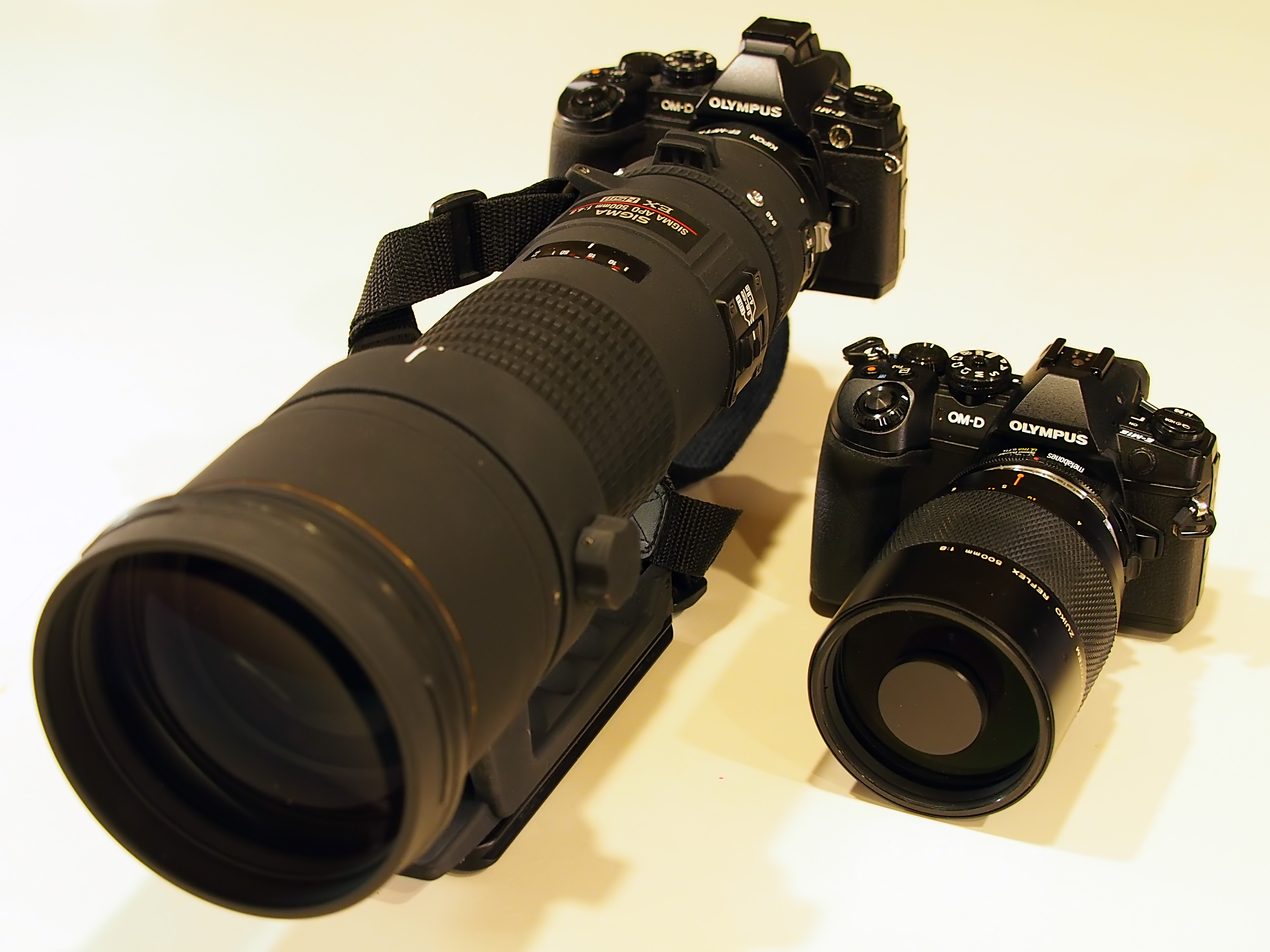
Thank you. I enjoyed reading this. I use the OM Reflex as an affordable alternative for wildlife photography.
Regards, Richard (Melbourne, Oz)
LikeLike
Enjoyed the article as well, especially the inclusion of the M.Zuiko 40-150. I understand the nature of mirror lenses better, and also understand why most are not very good.
LikeLike
Very thougghtful blog
LikeLike
I’m somewhat… obsessed with mirror lenses for their potential capabilities as portable astrophotography tools. Every convention suggests they’re not fit for the job what with the unadjustable optics and relatively slow speed, but that didn’t stop me from buying a Tamron SP 500 f/8 for this. Would you think that this Olympus lens is better for this application or would variances between copies make it too hard to tell? (star tests etc.)
LikeLike
I think you get what you pay for. The Olympus lens is first rate and I used it to shoot the 2017 Total Solar Eclipse in Wyoming. But for astro you really want aperture so that you can trade off focal length for speed. And then you need to spend on quality optics in your focal reducer. The virtue of a mirror lens is it compactness and there isn’t much point in shooting with a 3″ diameter mirror lens when the benefits of the design dictate that you use it in 8″ diameters and larger where astro is concerned.
LikeLike
Fair enough! I’m used to shooting with small scopes, 5″ SCT, 50mm ED APO, 4.5″ reflector, so I couldn’t help but be curious about another mirror lens over my Tamron that already seems to perform fine. Hard to tell without spending the extra cash. Thanks for the quick response!
LikeLike